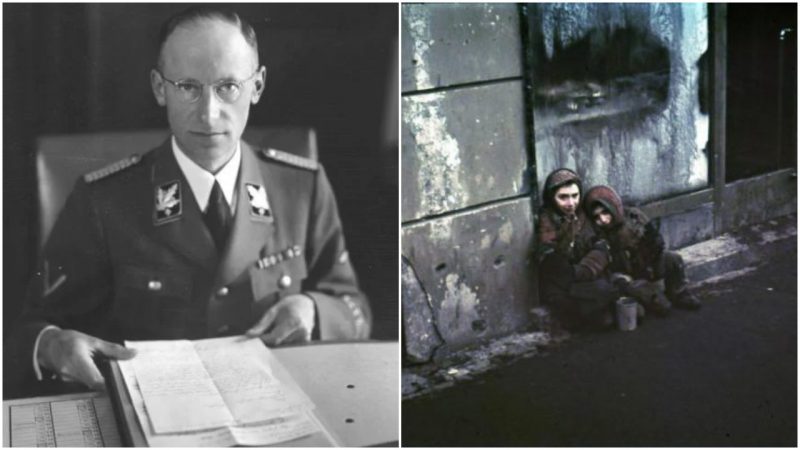Herbert Backe is a name that lives in infamy.
Hitler made clear in his political manifesto, Mein Kampf, that the future living space, or Lebensraum, of the German people, was going to be in the east, in the vast and fertile lands of today’s Ukraine, Poland, Belarus and Western Russia.
By stating this, he also indirectly announced that the war against the Soviet Union was imminent. Despite this threat, the two countries developed a pre-war agreement in 1939, known as the Molotov-Ribbentrop Pact — a fragile alliance which lasted until 1941, when all hell broke loose during Nazi Germany’s invasion of the USSR, known as Operation Barbarossa. This was the initial stage of the largest and bloodiest front in Europe, which would eventually bring about Hitler’s downfall.
But years before Berlin was under siege and the Fuhrer was pointing a gun at his head, the situation on the Eastern Front was looking fairly positive for the Germans. During the first few months of the operation, they had managed to penetrate deep into Soviet territory and form a 1,800-mile-long front.
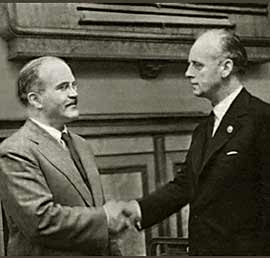
A coalition made of Nazi Germany, Fascist Italy, and a number of their satellite states, along with various SS volunteer groups from countries that did not take part in the conquest officially, like Spain, amassed to almost four million men. The question to which much attention was given during the preparation of the invasion was how to feed them all?
Transporting food from Germany to the front-line was not an option when it came to a long-term operation such as the conquest of Russia, especially as the country lacked key transport infrastructure. The invading army had to requisition food from the locals and live off the land. This would inevitably lead to large-scale famine and the death of millions of civilians.
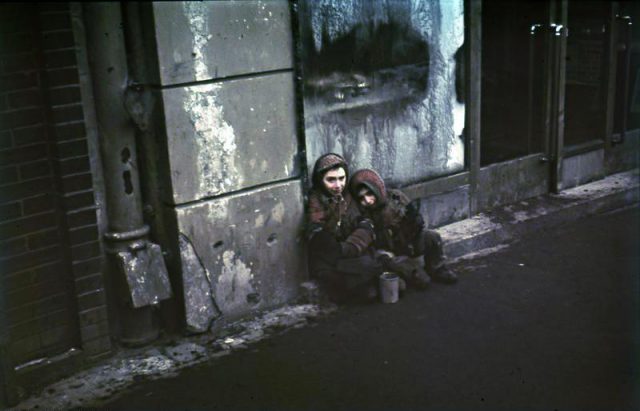
But for an ideology fueled by a notion of racial inequality, the starving of millions of “inferior” Slavs and Jews represented no problem whatsoever. For implementing the necessary measures for the so-called Hunger Plan, Alfred Rosenberg, one of the leading ideologues of the Nazi Party, personally nominated one man whose subsequent actions would lead to the death of millions of Soviet citizens.
His name: Herbert Backe.
He was born to a Prussian family living in Georgia, in 1896. When the Civil War broke out in Russia, Backe managed to reach Germany. He developed an interest in agriculture and studied Agronomy, becoming an assistant lecturer on agricultural geography in the Hanover Technical University.
Joining the SA and the Nazi Party in 1922, Backe quickly became a fervent supporter of Hitler and his ideas. When it was his turn to prove his zealotry, he wasted no time. Together with high Nazi officials such as Heinrich Himmler, Backe became responsible for conceiving on paper one of the worst engineered famines in modern history.
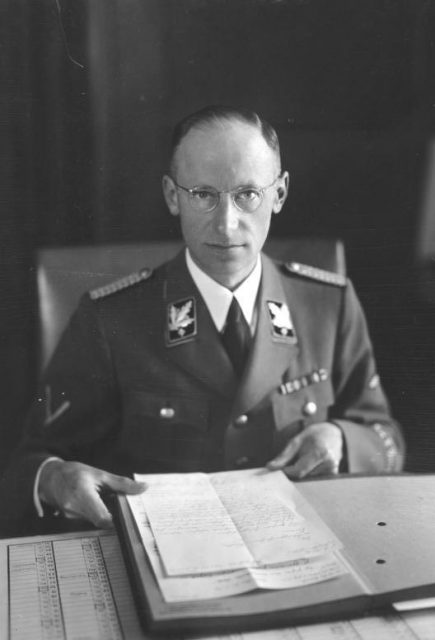
He introduced the Hunger Plan’s outline in December 1940, as soon as the planning for the invasion of the USSR was confirmed. By 1941, a document estimating 20 to 30 million civilian deaths attributed to food shortages alone was delivered to Herman Goering for approval.
This was part of Operation Oldenburg — a ruthless economic exploitation of all resources in occupied territories in the East headed by Goering. During the Nuremberg Trials, this document would become known as Goering’s Green Folder.
Operation Oldenburg, of which the Hunger Plan was a part, was drawn up on the premise that in order to successfully lead the offensive in the Eastern Front, the Wehrmacht was to obtain food exclusively from the occupied territories by the third year of the war.
The theory was backed by the conclusion that if the Wehrmacht was to receive their food supplies from Germany, the same famine would have struck the fatherland.
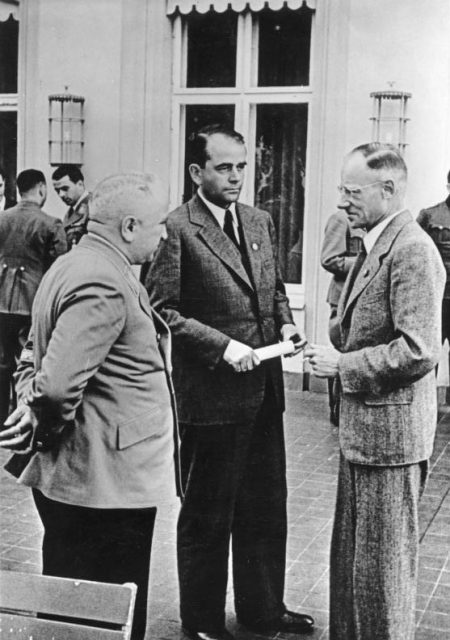
Once it was implemented, the effects were horrific. Historian Timothy Snyder studied the famine in the period between 1941 and 1944, concluding that around 4.2 million Soviet citizens lost their lives due to extreme food shortages and famine-related disease.
Related Video:
Among the numerous victims were many Jews who were forced into ghettos where a strict diet and food rationing was easily enforced. A Jewish person would receive a daily ration of 420 calories, which is less than 20 percent of basic human needs.
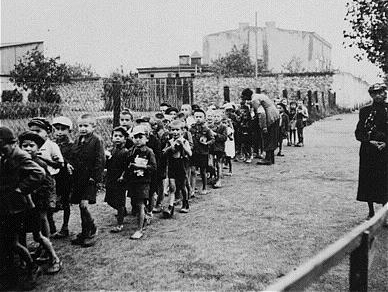
In the Warsaw ghetto, the ration was reduced to a mere 184 calories, making up to around 7.5 percent of daily needs. In addition, all Jews were banned from purchasing foodstuffs such as milk, eggs, meat, and butter. This strict policy aimed at starving millions of people was enforced rigorously on both the local population and prisoners of war.
The ill-treatment of Soviet captives largely relied on denying them food. Out of 5.7 million enemy soldiers captured, 3.3 million of them would die by 1945 as a direct result of malnourishment, starvation, and hunger-related diseases.
The architect of the Hunger Plan, Herbert Backe, received only words of praise by his superiors for causing such a devastating famine and clearing the Lebensraum from unwanted elements so that the future Greater Reich could colonize it.
However, as we all know, the realization of Hitler’s Thousand Year Reich never came through and by April 1945, Herbert Backe was forced to make a radical career turn. After Hitler’s suicide, a short-lived government under the leadership of Admiral Karl Donitz was established.
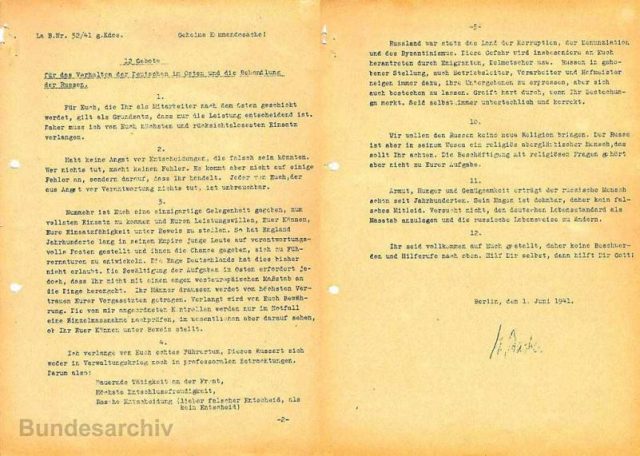
Backe assumed the role of Minister of Food and Agriculture. Instead of causing a famine, his job became preventing it from happening in Germany.
But very soon, Nazi Germany officially surrendered and the government was dismissed. Backe was convinced that his expertise would be needed by the Allies in order to prevent the famine from hitting Germany in the immediate post-war period.
He even prepared a speech intended for the Supreme Allied Commander himself, Dwight D. Eisenhower. However, the culprit of the Eastern Front famine couldn’t be more wrong. Herbert Backe was arrested in 1945, without anyone asking him of his expertise.
He remained a staunch supporter of the Nazi ideals, claiming in a letter to his wife written from prison in 1946, that it was “one of the greatest ideas of all time,” especially its agricultural policy which he implemented.
Once he became sure that he would not be given a place in the post-war West German government, Backe committed suicide in fear that he would be handed over to the Soviets.
Nikola Budanovic is a freelance journalist who has worked for various media outlets such as Vice, War History Online, The Vintage News, and Taste of Cinema. His main areas of interest are history, particularly military history, literature and film.
